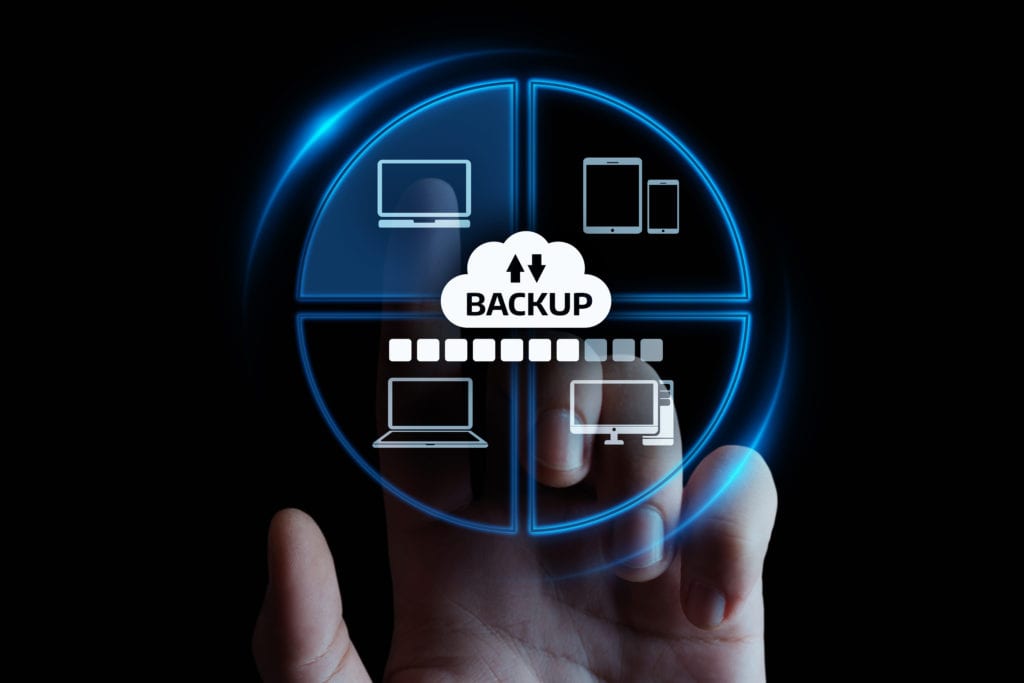
External hard drives are a popular way to back up a laptop or desktop computer. They’re easy to plug in, your backup is always within reach, and they’re small enough to be portable.
While it’s fine to back up your data using an external hard drive, you do not want this to be the only backup that you have. Otherwise, you could be facing a major data loss problem should something happen.
Several things can go wrong with data backup, especially if it’s left in the hands of a user, which an external hard drive backup typically is. This is in contrast to a cloud backup, which is automated and can be managed remotely by an IT provider.
Following, are some of the issues you can face when you depend on only your external hard drive for data backup.
Drive Failures
Mechanical hard drives can fail. If you have a hard drive crash, your data can be corrupted, and you’re left without any backup at all if that’s the only one that you had.
In hard drive failure testing by Backblaze, one brand had a failure rate as high as 25.4%.
Natural Disasters
Users will often leave their external backups plugged into their computers 24/7. So, it resides in the same location as the data on their PC hard drive. Sometimes the two drives are within inches of each other.
This is a risky situation if that external hard drive is your only backup. If there is a natural disaster that floods or otherwise destroys your building, you could lose your data and backup at the same time.
Even something like a lightning strike that causes a power surge could take out both your PC and your external hard drive in one fell swoop.
Ransomware
Ransomware attacks are on the rise. In 2020, attacks skyrocketed 485%.
One function of ransomware is to seek out and spread to as many connected devices as possible. So, if your computer is infected with ransomware, your connected external hard drive is going to be one of the first places the infection spreads.
This would leave you with few options if that hard drive was your only backup. You would either have to pay the ransom and hope for the best or lose your data.
Drive Loss or Damage
Because of the portability of external hard drives, they can easily be taken with you. Savvy users that understand the potential for a natural disaster, may take their external hard drive home with them each day.
This does increase the risk of that drive being dropped or damaged in some way or lost (i.e., left on a train with a laptop case or subject to being rained on). If this happens, a technician may not be able to retrieve your data if the damage is too severe.
Backup Issues (Stalling, Space, etc.)
User error is a major cause of backup issues. Users will often plug in a backup, get it started, and then not think about it again until something happens, and that data needs to be recovered.
External hard drives are more susceptible to human error than cloud backups because the process isn’t being facilitated by a vendor or IT professional.
Some of the issues that backups can run into when unchecked are:
- Run out of space
- Stall due to hardware conflict
- Don’t restart after a reboot
- Software issue that causes them to turn off
- Mapping problem due to a folder change or OS update
Recovery Problems
About 58% of backups fail when recovery is attempted. If you’re not regularly testing backup recovery, there is a good chance that you may be unpleasantly surprised when you need that data to be recovered quickly.
Hard drive backup with devices like Apple’s Time Machine can also run into data recovery problems if you have upgraded your macOS since the time you first began the backup.
3-2-1 Backup Rule
It’s best to follow the 3-2-1 backup rule when backing up data. It’s designed to ensure you’re protected against a data loss incident and the failure of one of your backup systems.
An external hard drive backup is compatible with this rule, so you don’t have to give that up if you want to keep it in place. The rule just adds another backup to remove the risk of a single point of failure.
The rule goes like this:
3: Keep three copies of all your data. This could be, a) PC hard drive, b) external backup, c) cloud backup.
2: Ensure you’re using at least 2 different storage media. In other words, two external hard drives don’t count as two different storage media.
1: Keep at least one of your backup copies in the cloud. This ensures you have accessibility to at least one backup from anywhere.
Put a Solid Cloud Backup Solution in Place Today
Carl’s Computer Care can help your Louisiana business set up and regularly test your device backups to ensure you always have an easily restorable copy of your data.
Contact us today to schedule a consultation! Call 225-315-3498 or reach us online.
